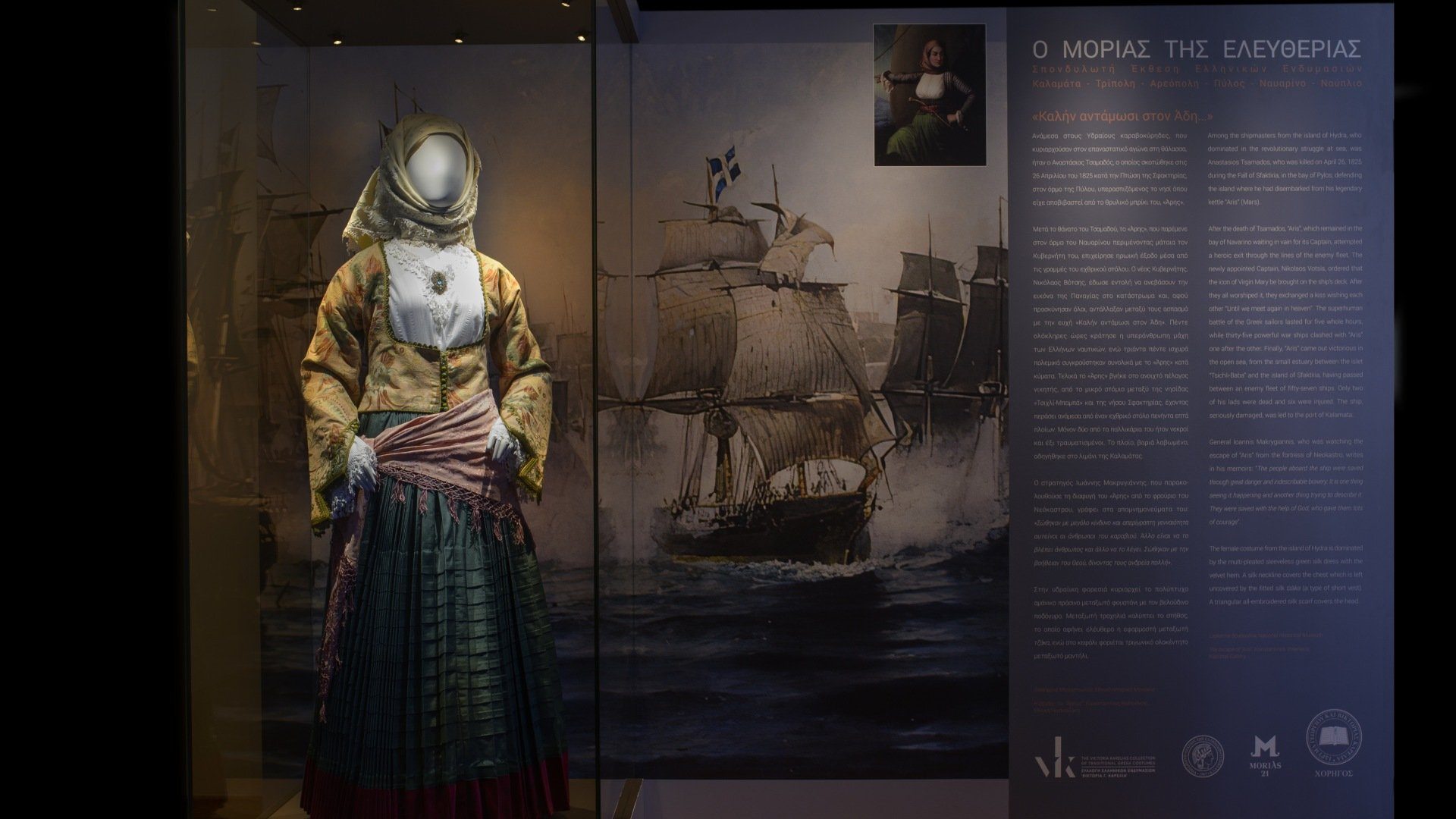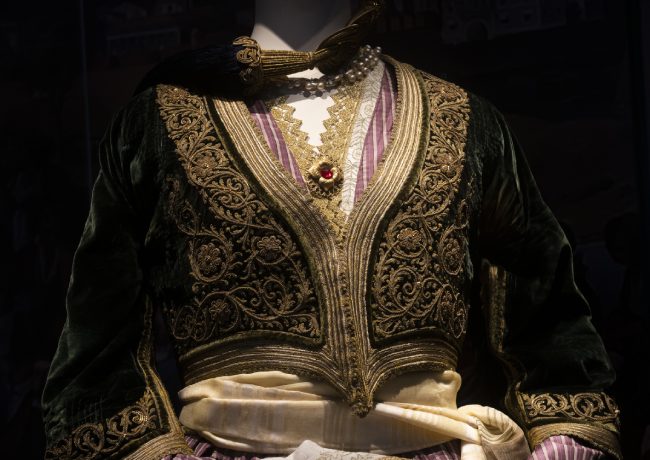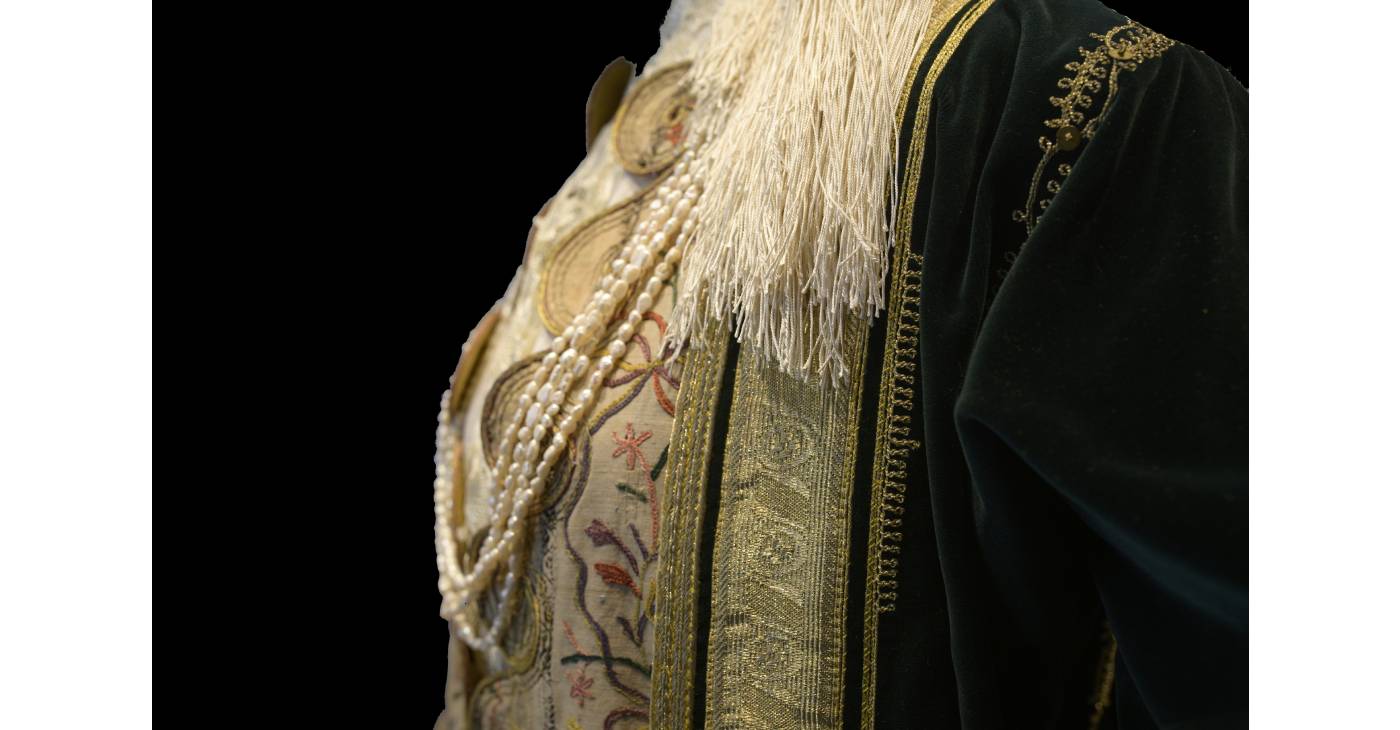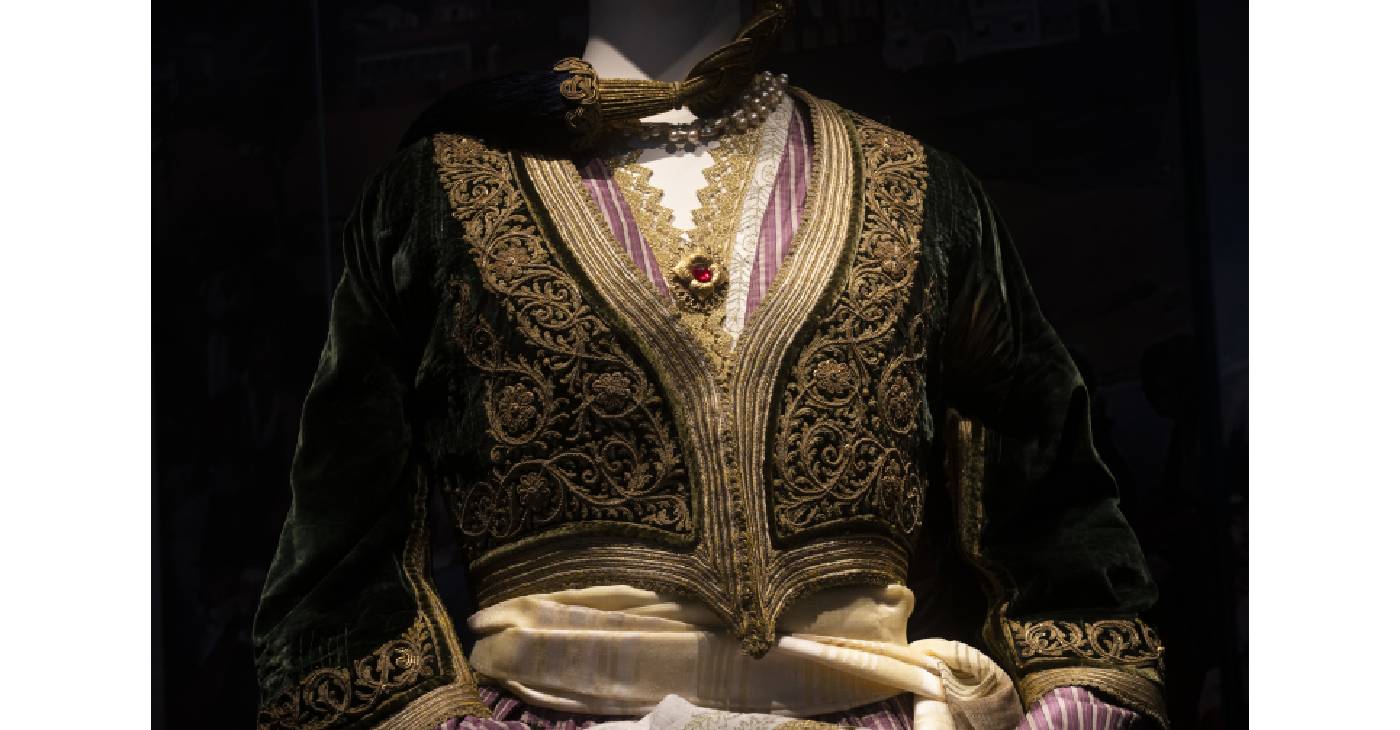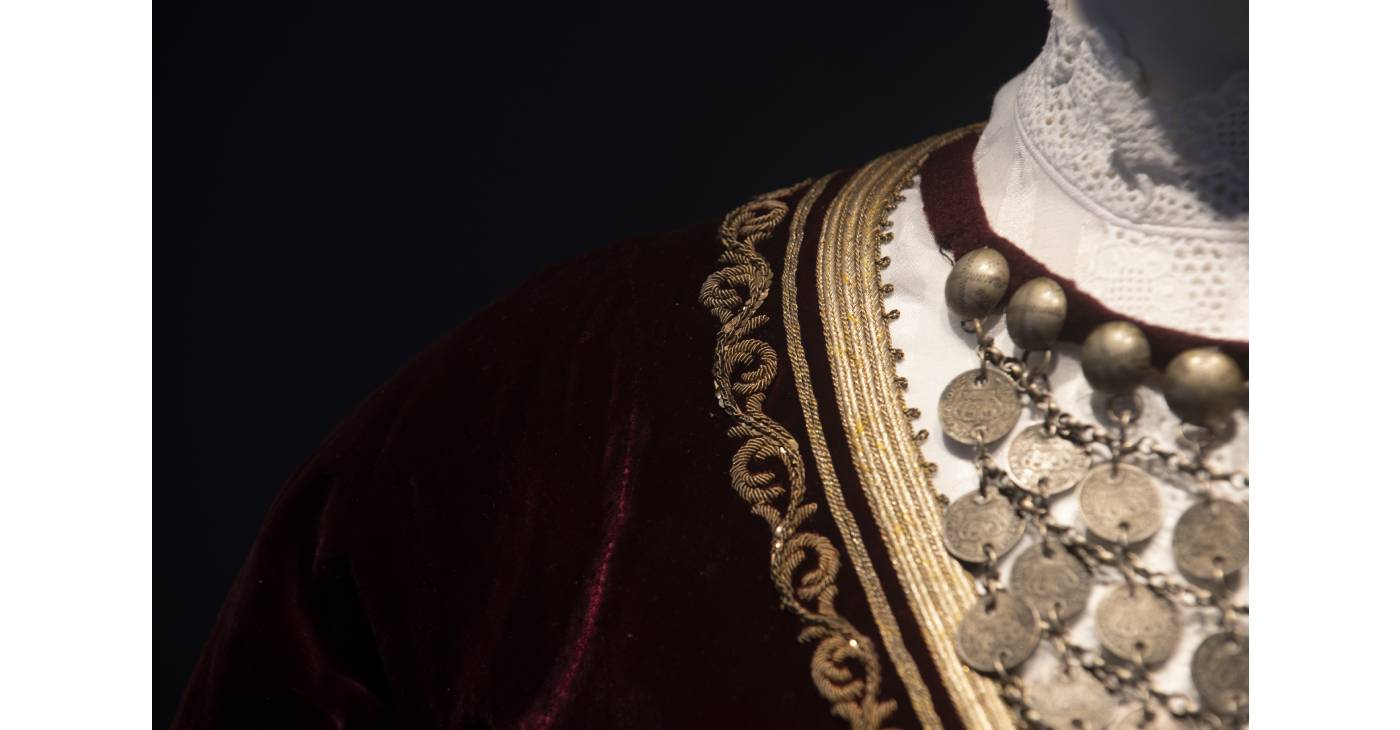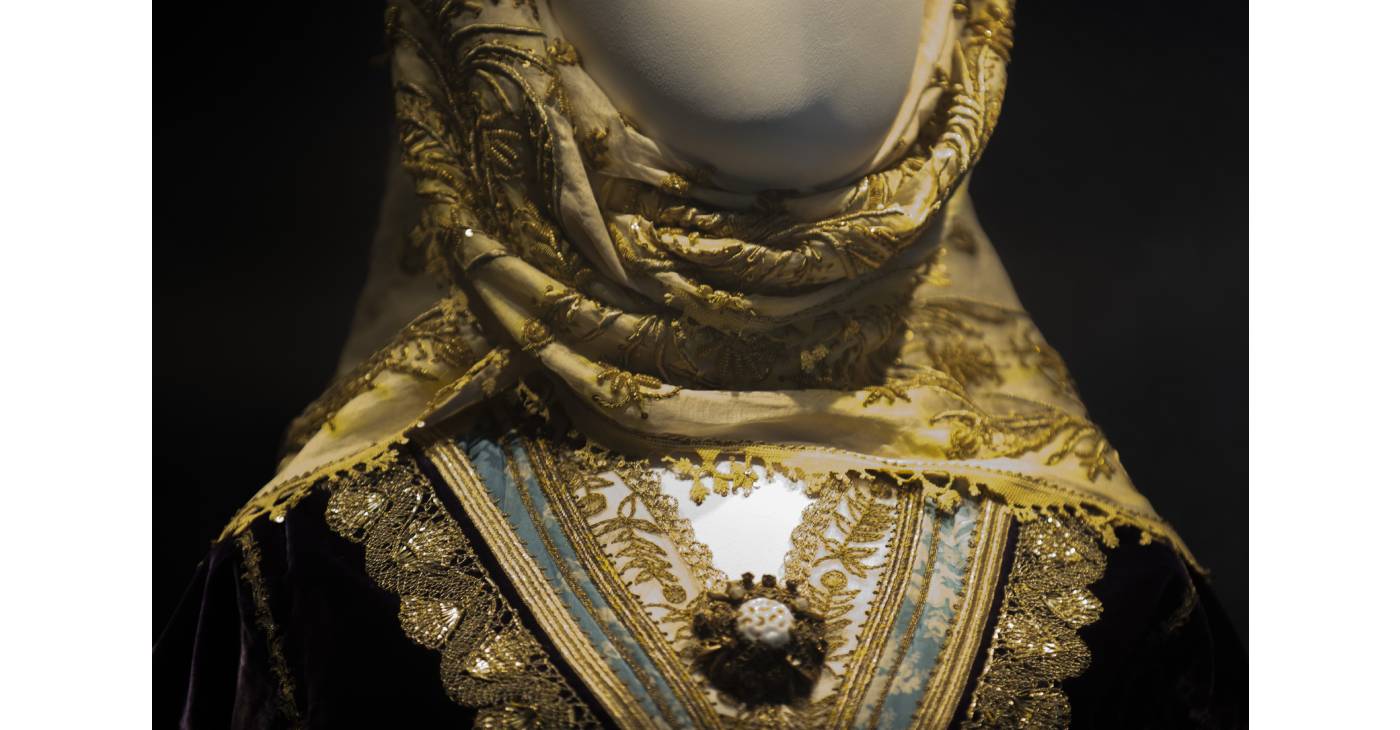Exhibition in Kalamata
Kalamata, the first city to be liberated, on March 23, 1821. The failed Orlov uprising of 1770, in which the prefect of Kalamata, Panagiotis Benakis, contributed with a militia corps consisting of 400 Mani men. The costume with the precious silk “kavadi” garnment and the silk belt on display here show the wealth of the local leaders, and are a sample of the old urban attire of Kalamata, for which we draw important information from the dowry agreement of Panagiotis Benakis’ daughter, Petzechroula.
